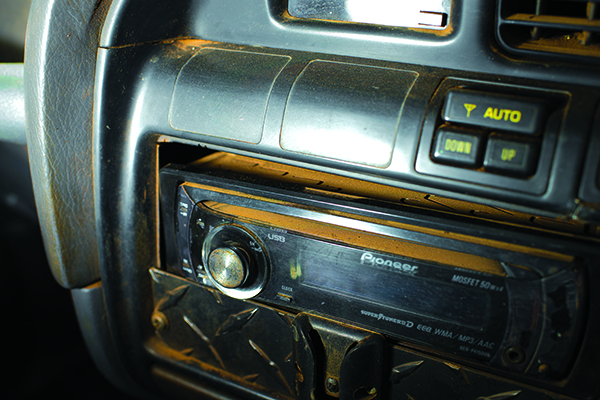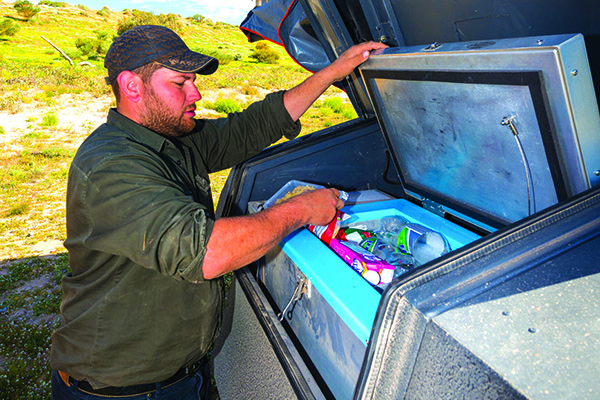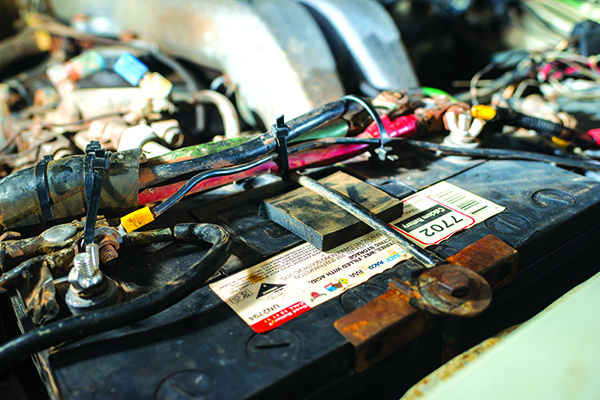Geez I’ve been hard on the equipment over the years. I mean seriously, I reckon I could single-handedly keep the entire mechanical industry out of recession with the amount of dosh I’ve spent on vehicle repairs and offroad upgrades.
The good thing is I’ve learned a few valuable lessons about what works and what doesn’t, especially when it comes to those nifty upgrades you tend to do yourself.
So what have I learned? Well, obviously high quality equipment and workmanship is always going to be at the top of the priority list, but equally as important; every upgrade you make needs to be 100 per cent bush-proof! I’ve had equipment installed by so-called experts, break on its maiden voyage simply because your average tradie wouldn’t have a clue about how tough offroad touring can be. It just goes to show — sometimes even the simplest bush-proofing technique can literally save you thousands of dollars in the long run.








With that in mind, here are a few pointers to help toughen up some of the most common electrical DIY projects you’re likely to have a crack at.
AUXILIARY BATTERY SET-UP
This could quite possibly be the most popular camping or touring modification on the planet! Funnily enough it’s also one of the most common things to fail out on the tracks. It’s not so much the wiring that causes all the dramas; it’s more the weight of the auxiliary battery being grossly underestimated. Yep, your typical 100AH AGM can weigh up to around 30-40kg, so you really need to make sure it’s mounted in a nice and secure location.
For example, if your vehicle's inner mud guards are looking a little second-hand around the mounting bolts (visible corrosion and cracks), adding even more weight to the mix and then ploughing over thousands of corrugations is just asking for trouble. It’s even more a concern if there are two batteries (double the weight) to be mounted on the one side, yet for some reason it gets overlooked. In saying that, most good quality battery trays are extremely sturdy, and are designed to spread the weight cross a number of mounting points.
Another important pointer is to ensure the negative pole/terminal on the battery is always positioned closest to the inner guard on your car or the wall of your camper, not the positive pole. Why? Well, lets put it this way – you don’t want a bent body panel earthing out on the battery if you lean your 4WD against a rock, or worse, have an accident. Also, it might sound super simple but make sure it’s secured properly. In other words, a few self-tapping screws to hold the battery mounts in place aren’t going to cut the mustard if you roll your rig over. Use good strong bolts with nice thick washers and a bit of common sense. And while you’re at it, throw a layer of rubber under the battery too; it’ll help dampen all those harsh corrugations which take a nasty toll on your batteries overall lifespan.
RADIO HEAD UNIT
I’ve had several radio head units collapse in a heap and literally fall off the mounting brackets after a day of tough touring. To help beef things up a bit, apply a thread locker solution to thread on the mounting screws or fasteners so they don’t loosen up with the vibrations.
When it comes to the wiring, it’s pretty simple really - don’t be dodgy! Use a good quality adaptor plug to ensure the electrical connections are up to the task, and make sure the wiring isn’t going to rub against anything when it’s tucked away either. If the wiring is a bit clumped and messy, an idea is to wrap it up loosely in a bit of old tyre tube rubber, which can stop it from chaffing straight through the insulation.
If you like a few mellow tunes around the camp, chances are you’ve flattened your car battery in the process at least once right? A little trick is to wire the radio (constant power and signal power) directly to your auxiliary battery via an on/off switch. It’s super simple, and means you won’t have to break out the jumper leads every second morning either.
12V FRIDGE INSTALLATION
12V fridges are usually pretty reliable things these days, so if one stops working there’s a good chance it’s due to a wiring issue rather than an internal component of the fridge itself. So if you want as much reliability as possible, pay particular attention to how and where the electrical cable is run, especially if the fridge is on a moving slide; the last thing you want is to pinch and damage a wire! Also, mount the main 12V auxiliary plug upside down, so water or dirt can’t get trapped inside.
When it comes to mounting your fridge, one thing’s for sure – they can be heavy buggers, especially if you’re running an 80-90L model loaded to the hilt with beer! The weakest link is usually the poor old fridge slide, which tends to collapse quicker than your average camp chair under those sorts of conditions. I’ve seen some designs that use nothing more than a few cheap pop-rivets to secure it in place, so they literally take the brunt of load. It’s a bit like using match sticks to build a chair... for a bloody hippo!
Also, fridges need to breathe. In other words you’ll want to leave plenty of ventilation room around the air vents. The cooler the air is around the fridge the more efficiently it will run, so don’t be afraid to insulate the fridge compartment either.
GOING SOLAR
SOLAR REGULATOR: There are a few things to keep in mind when mounting your solar regulator. The first is to mount it as close to your battery as possible. The aim is to reduce the amount of voltage drop in the cable between the battery and the regulator, which can cause problems with the communication between the two.
The second is to mount it properly. Sounds simple, right? Well most people simply drill a few self tappers into a bit of plywood or chip board and call it a job well done. Sure it seems sturdy enough at first, but after a few days of corrugations I’d bet my last buck it’ll rip right off the wall. Oh, and make sure there is plenty of ventilation around the cooling fins – it can get a little warm at times!
MOUNTING SOLAR PANELS: It’s important to remember that solar panels are always live, meaning there’s no “off” switch. So even if the panel isn’t hooked up to a battery, don’t go sticking screw drivers in the electrical plug, eh?
Always try and mount your solid frame solar panels so there’s a gap underneath for ventilation. The proper solar panel mounts aren’t cheap, but are usually designed to allow optimum air flow. The problem for us 4WDers is that the gap is perfect for snagging low hanging vines and branches. So thinking of a way to add a bit of extra protection can’t be a half bad idea either.
HAPPY TINKERING
In the realm of 4WD adventures and offroad touring, the key to a successful DIY installation is to really think about the conditions each component will be subjected too. Then it’s a matter of ensuring they’re well and truly up to the task. Harsh corrugations and vibrations, mud, water and rust will find any weak links quicker than a rabbit could inhale a carrot, but you’d be surprised at how well things can hold up with a little extra protection. So if you’ve got a spare weekend, cast your eye over your set-up's electrical gear and double check it’s up to the challenge. Happy tinkering!
Check out the full feature in issue #120 of Camper Trailer Australia magazine. Subscribe today for all the latest camper trailer news, reviews and travel inspiration.




